The Weather: Our transmission map–based on the CDC’s original metrics–shows just how high cases are in some areas, with two new categories for 200-300 & >300 weekly cases per 100,000. Currently more than 90 percent of people live in an area with more than 100 weekly cases per 100,000!
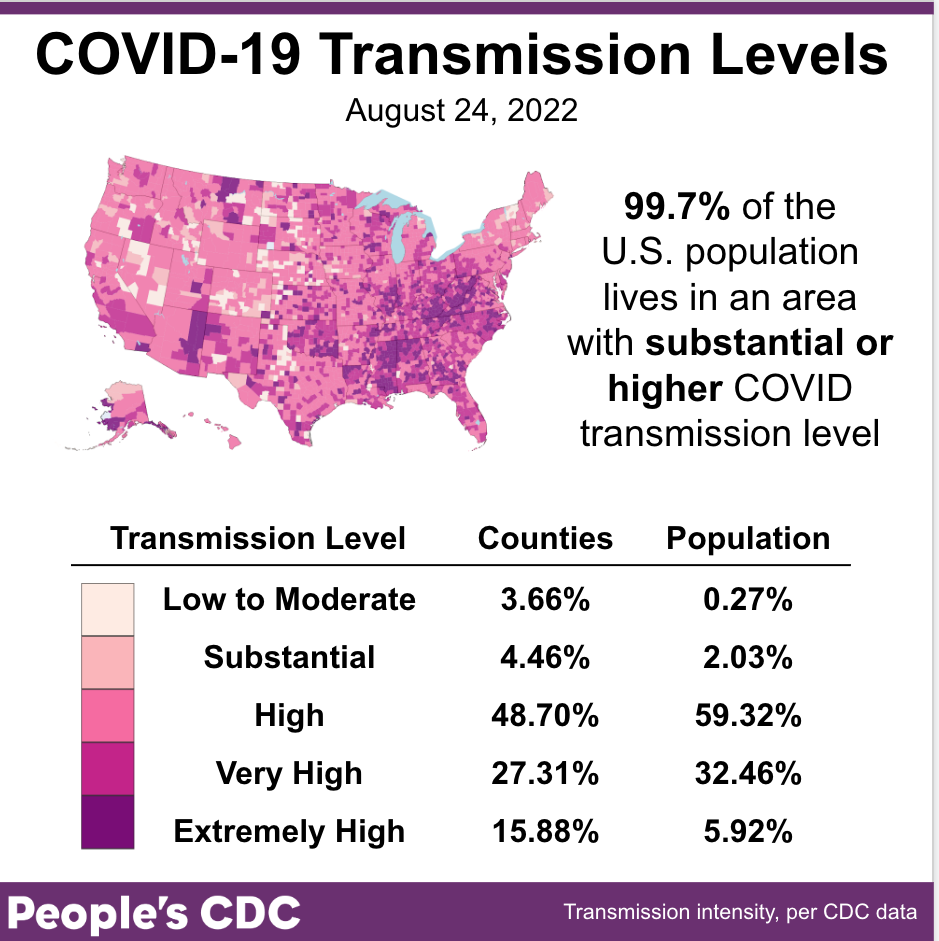
On Variants: Nationally, there is little change from last week: BA5 remains at about 88% & BA4.6 increased slightly from 7% to 8%. This may be a small break in a year where we have seen rapid, consistent turnover of variants.
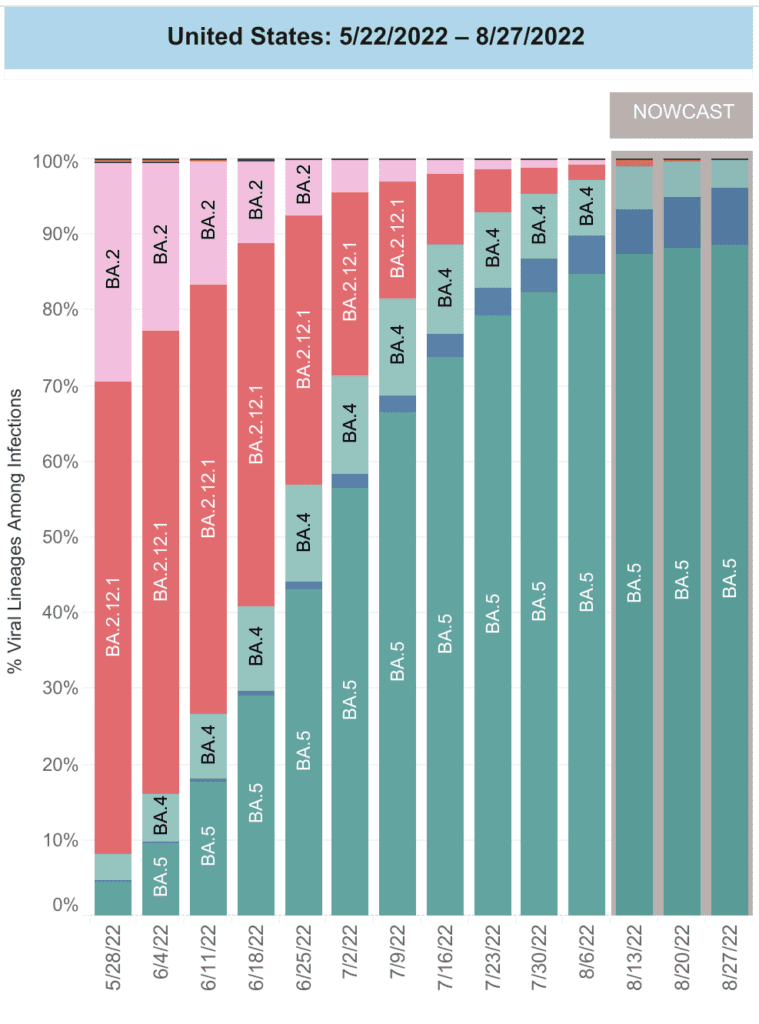
Regionally, we see some variation, with BA4.6 less common on the West Coast but making up to 15 percent of cases in the Central US. The Northeast is in between, with BA4.6 comprising about 9 percent of cases.
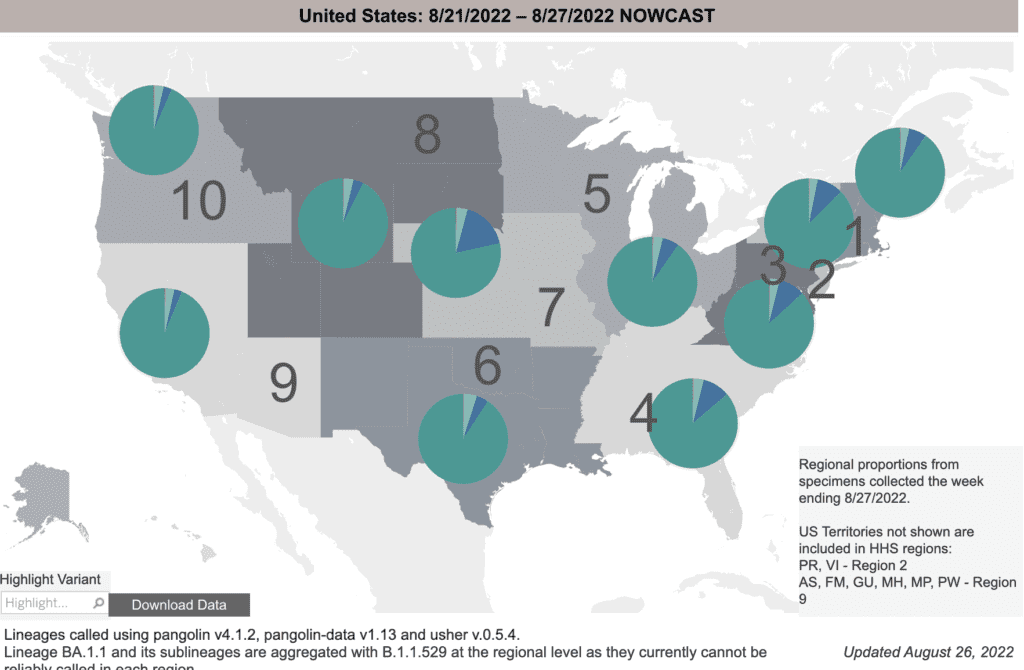
Wastewater Monitoring: National wastewater data show the BA5 surge has peaked, with the first decline since March. Levels are still high & the length of this surge raises questions about what “living” with COVID looks like.
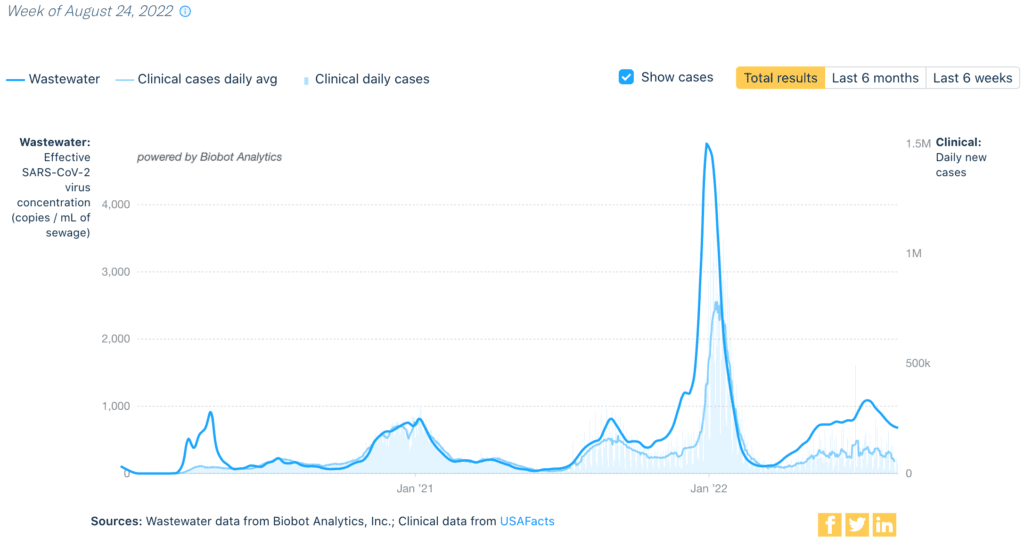
By region, wastewater data (which is not affected by unreported home tests or reduced testing) show declines in all areas. The West currently has the lowest levels overall, at 536 copies per milliliter.
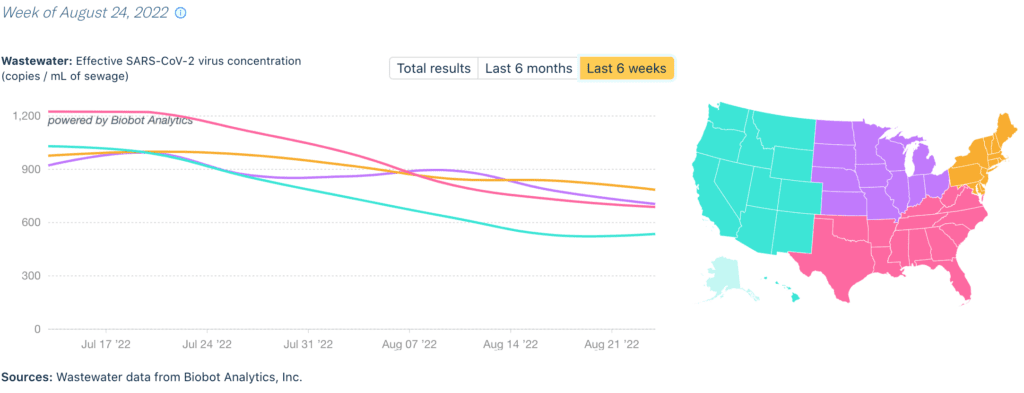
Hospitalizations: While still elevated, hospitalizations are also beginning to decline as the BA5 surge slows down.
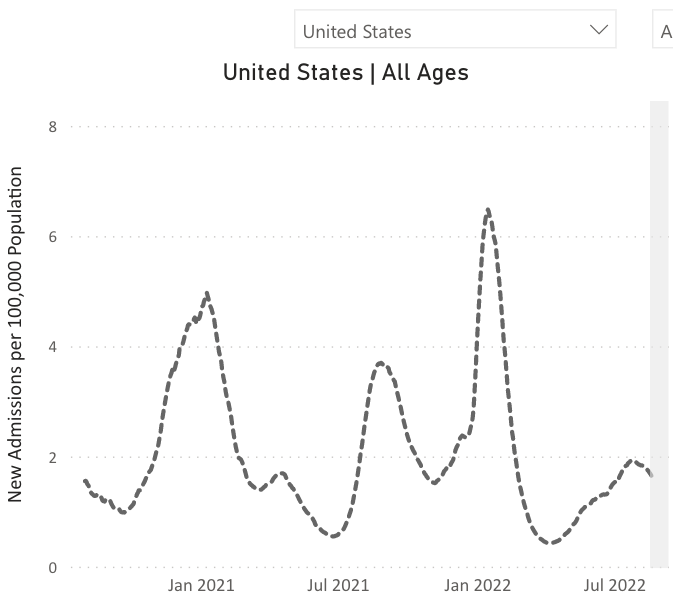
Deaths: From August 18th to August 24th, 2,729 people died of COVID nationally. Over 210,000 Americans have died from COVID so far in 2022.
The US is a world leader in COVID deaths. Along with the UK, we have the highest deaths per population–suggesting that our approach to controlling the pandemic is not as successful as other countries.
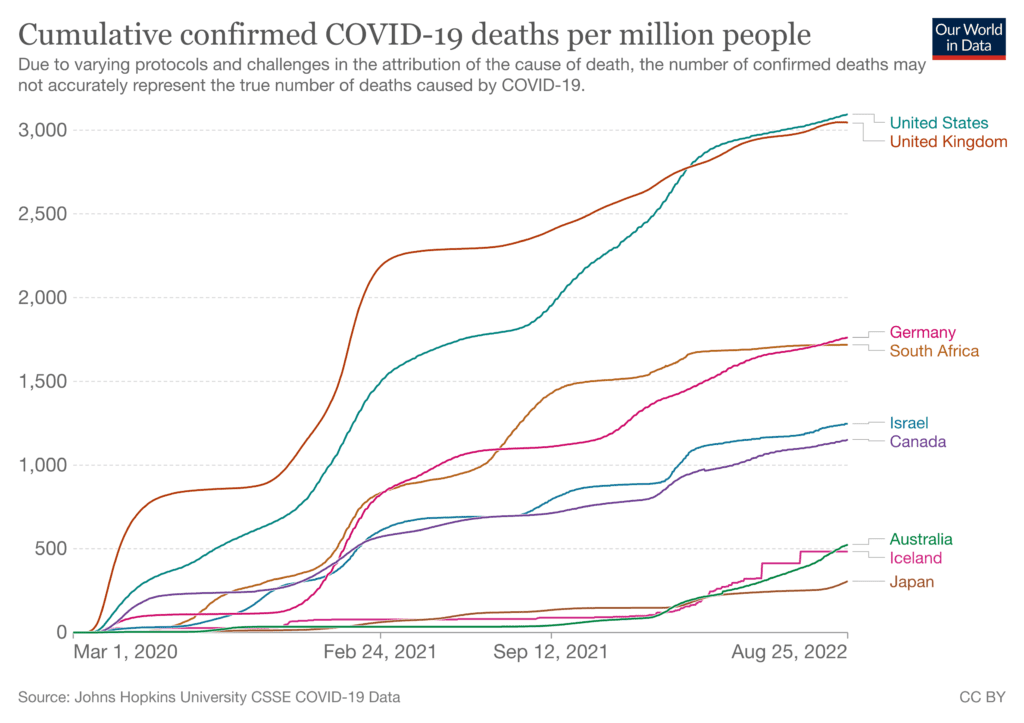
On Long COVID: Scientists are examining the possible roles–& treatments–of microclots in Long COVID (LC). While those with COVID are more likely to develop clots, it is not yet definite that clots contribute to LC.
New reports make clear that Long COVID is having a large impact on the labor force. While preventing disease should be a goal by itself, businesses should also realize that keeping their staff & customers healthy is in their best interest.
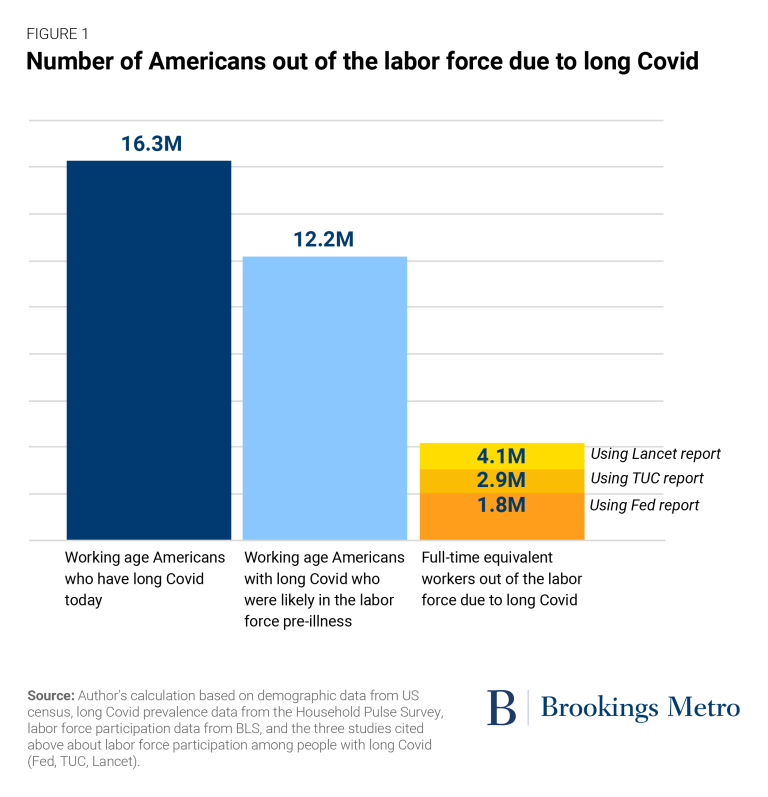
Forecast: As students return to school, using layers of protection are the best way to keep schools safer & prevent disruptions due to sick days. The American Academy of Pediatrics is clear: masks do not interfere in student learning.

The administration decided on a treatment & vaccination approach. Studies show Paxlovid works to prevent hospitalization & death among older folks – but with no benefit for those under 65 or without underlying conditions. We need next generation treatments!

Updated vaccines, targeting BA5 & the original strain, may be available as soon as September. This fantastic news comes with a few concerns. The boosters will only be available to folks 11 & older – once again leaving young children unprotected.
Our vaccine infrastructure has largely been shut down. We need an equitable, well-funded roll-out of these boosters. However, the US lags most of the world in using boosters & it may be challenging to motivate the public to get this booster.

We are potentially at a turning point. If no new variants emerge & the new bivalent boosters are effective, we may see a true decline in cases.
Data already suggest that with high vaccine levels, we are seeing fewer deaths–though still high hospitalization rates–during surges. This does not change the PCDC’s position that preventing infections in the first place is essential, especially given the high rates of LC.
However, it’s unclear what impact the return to school & typical winter surge might have. And new variants can emerge at any time–another reason to prevent cases & reduce chances for the virus to mutate.
Be Prepared: Time sensitive: The government plans to end its program of delivering a limited number of free, at-home COVID tests via USPS beginning September 2nd, per the USPS. You can check to see if you’re due to receive a last round of tests by visiting the USPS free test site.
And if your government tests look like they expire soon – check here to see how long they are actually good for.
Data Note: In this report, numbers pulled from the CDC were current as of August 24, 2022. The CDC updates data frequently as it receives refreshed information from states and counties. The numbers you view today may be slightly different from the numbers from this report.
Sources: Check out the links throughout and see our website for more! https://bej.gbh.mybluehost.me